Development and Space-Qualification of a Miniaturized CubeSat’s 2-W EDFA for Space Laser Communications
Abstract
:1. Introduction
2. EDFA’s Basic Design and Specifications
3. EDFA’s Space Qualification and Test
3.1. Radiation Tests
3.2. Vibration Tests
3.3. Thermal Vacuum Tests
4. Conclusions
Author Contributions
Funding
Institutional Review Board Statement
Informed Consent Statement
Data Availability Statement
Conflicts of Interest
References
- Carrasco-Casado, A.; Mata-Calvo, R. Space Optical Links for Communication Networks. In Springer Handbook of Optical Networks; Mukherjee, B., Tomkos, I., Tornatore, M., Winzer, P., Zhao, Y., Eds.; Springer: Cham, Switzerland, 2020; pp. 1057–1103. [Google Scholar]
- Carrasco-Casado, A.; Shiratama, K.; Trinh, P.V.; Kolev, D.; Ishola, F.; Fuse, T.; Tsuji, H.; Toyoshima, M. NICT’s versatile miniaturized lasercom terminals for moving platforms. In Proceedings of the IEEE International Conference on Space Optical Systems and Applications (ICSOS), Kyoto, Japan, 28–31 March 2022. [Google Scholar]
- Carrasco-Casado, A.; Biswas, A.; Fields, R.; Grefenstette, B.; Harrison, F.; Sburlan, S.; Toyoshima, M. Optical Communication on CubeSats–Enabling the Next Era in Space Science. In Proceedings of the IEEE International Conference on Space Optical Systems and Applications (ICSOS), Okinawa, Japan, 14–16 November 2017. [Google Scholar]
- Carrasco-Casado, A.; Takenaka, H.; Kolev, D.; Munemasa, Y.; Kunimori, H.; Suzuki, K.; Fuse, T.; Kubo-Oka, T.; Akioka, M.; Koyama, Y.; et al. LEO-to-ground optical communications using SOTA (Small Optical TrAnsponder)–Payload verification results and experiments on space quantum communications. Acta Astronaut. 2017, 139, 377–384. [Google Scholar] [CrossRef] [Green Version]
- Carrasco-Casado, A.; Do, P.X.; Kolev, D.; Hosonuma, T.; Shiratama, K.; Kunimori, H.; Trinh, P.; Abe, Y.; Nakasuka, S. Intersatellite link between CubeSOTA (LEO CubeSat) and ETS9-HICALI (GEO satellite). In Proceedings of the IEEE International Conference on Space Optical Systems and Applications (ICSOS), Portland, OR, USA, 14–16 October 2019. [Google Scholar]
- Desurvire, E. Erbium Doped Fiber Amplifier: Principles and Applications; Wiley and Sons: New York, NY, USA, 1996. [Google Scholar]
- Desurvire, E. Erbium Doped Fiber Amplifier, Device and System Developments; Wiley, Interscience: New York, NY, USA, 2002. [Google Scholar]
- Girard, S.; Morana, A.; Ladaci, A.; Robin, T.; Mescia, L.; Bonnefois, J.-J.; Boutillier, M.; Mekki, J.; Paveau, A.; Cadier, B.; et al. Recent advances in radiation-hardened fiber-based technologies for space applications. J. Opt. 2018, 20, 093001. [Google Scholar] [CrossRef] [Green Version]
- Becker, P.C.; Olsson, N.A.; Simpson, J.R. Chapter 8—Amplifier Characterization and Design Issues. In Erbium-Doped Fiber Amplifiers, Fundamental and Technology; Academic Press: New York, NY, USA, 1999. [Google Scholar]
- Welch, M.; Edmunds, J.; Crabb, J.; Prowse, E.; Hall, K.; Kechagias, M.; Elliott, R.; Kehayas, E. High-power booster optical fibre amplifiers for satellite communications. Free.-Space Laser Commun. 2020, 11272, 212–228. [Google Scholar]
- Edmunds, J.; Henwood-Moroney, L.; Hammond, N.; Prowse, E.; Hall, K.; Szemendera, L.; Davoudzadeh, N.; Holland, P.; Simpson, K.; Palmer, C.; et al. Miniaturized optical communications modules for space applications. In Proceedings of the International Conference on Space Optics—ICSO 2020, Online, 11 June 2021. [Google Scholar]


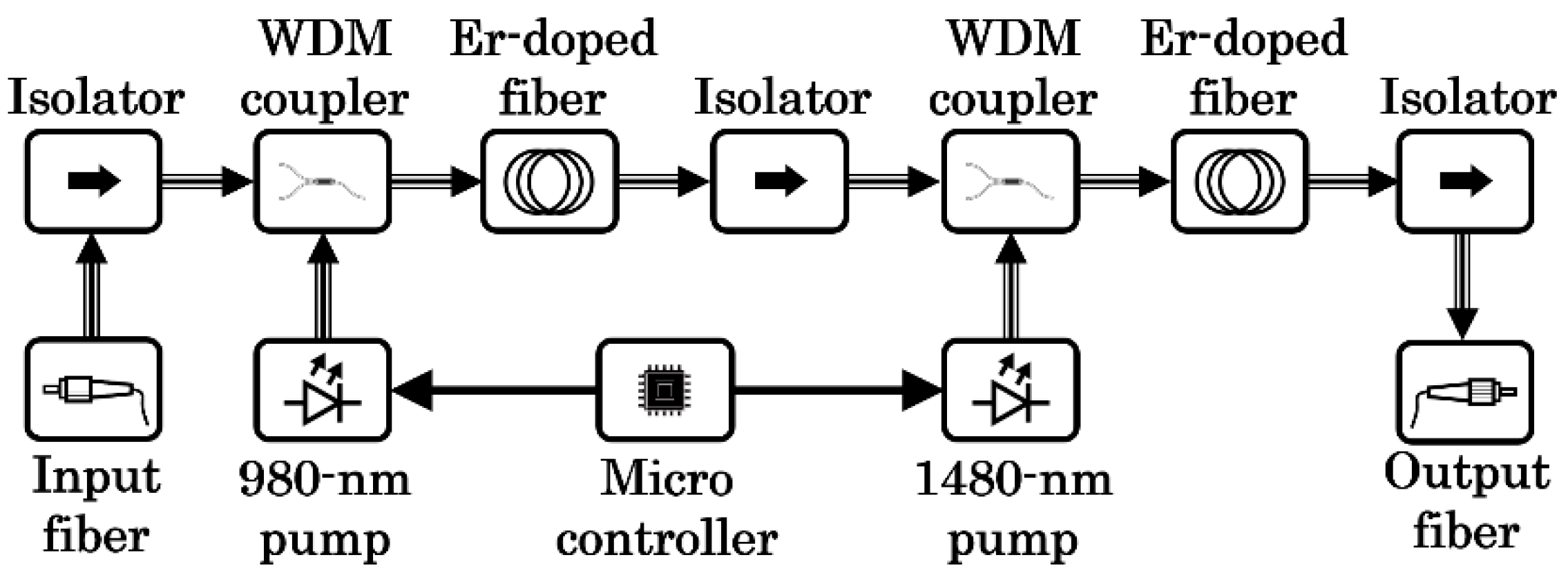
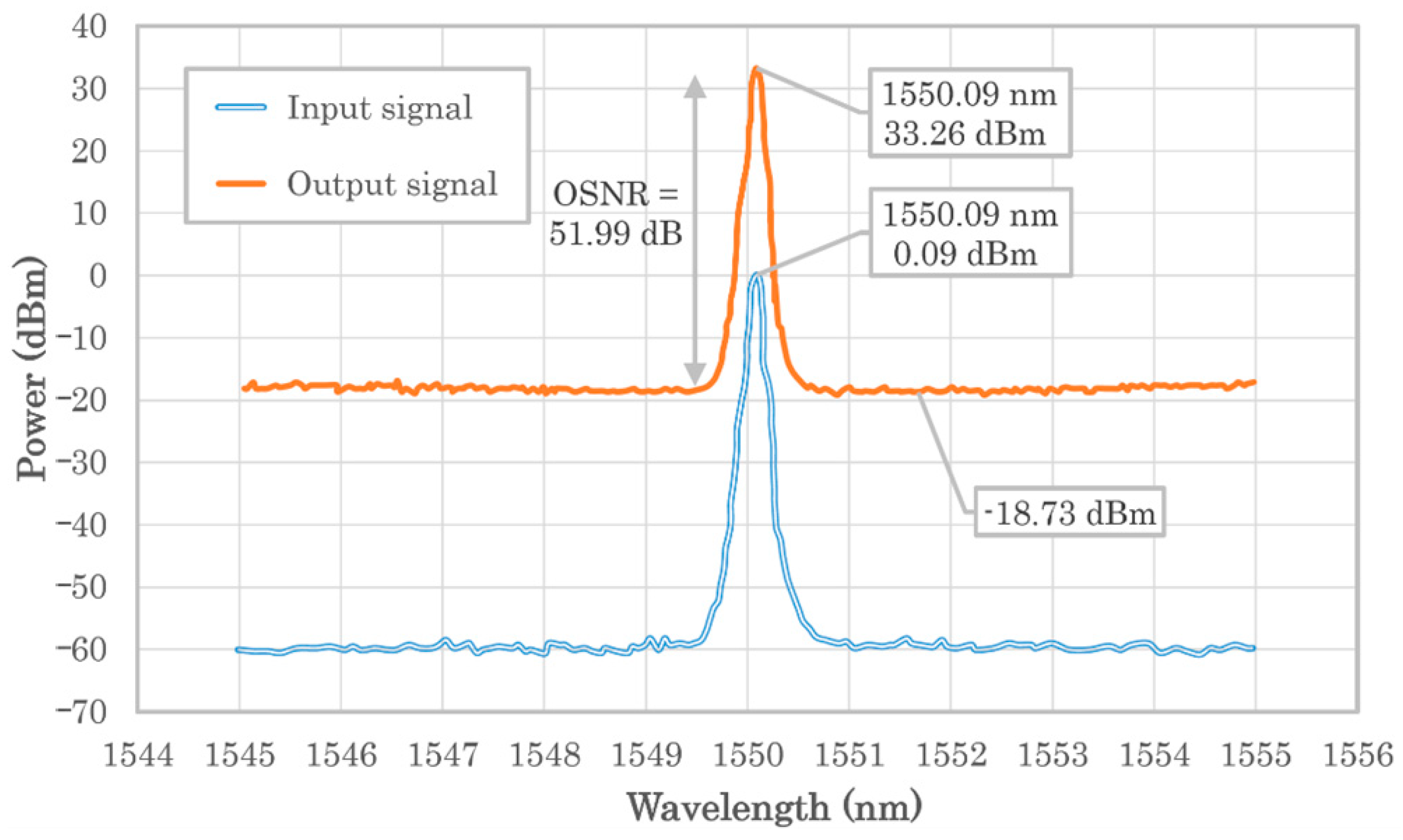
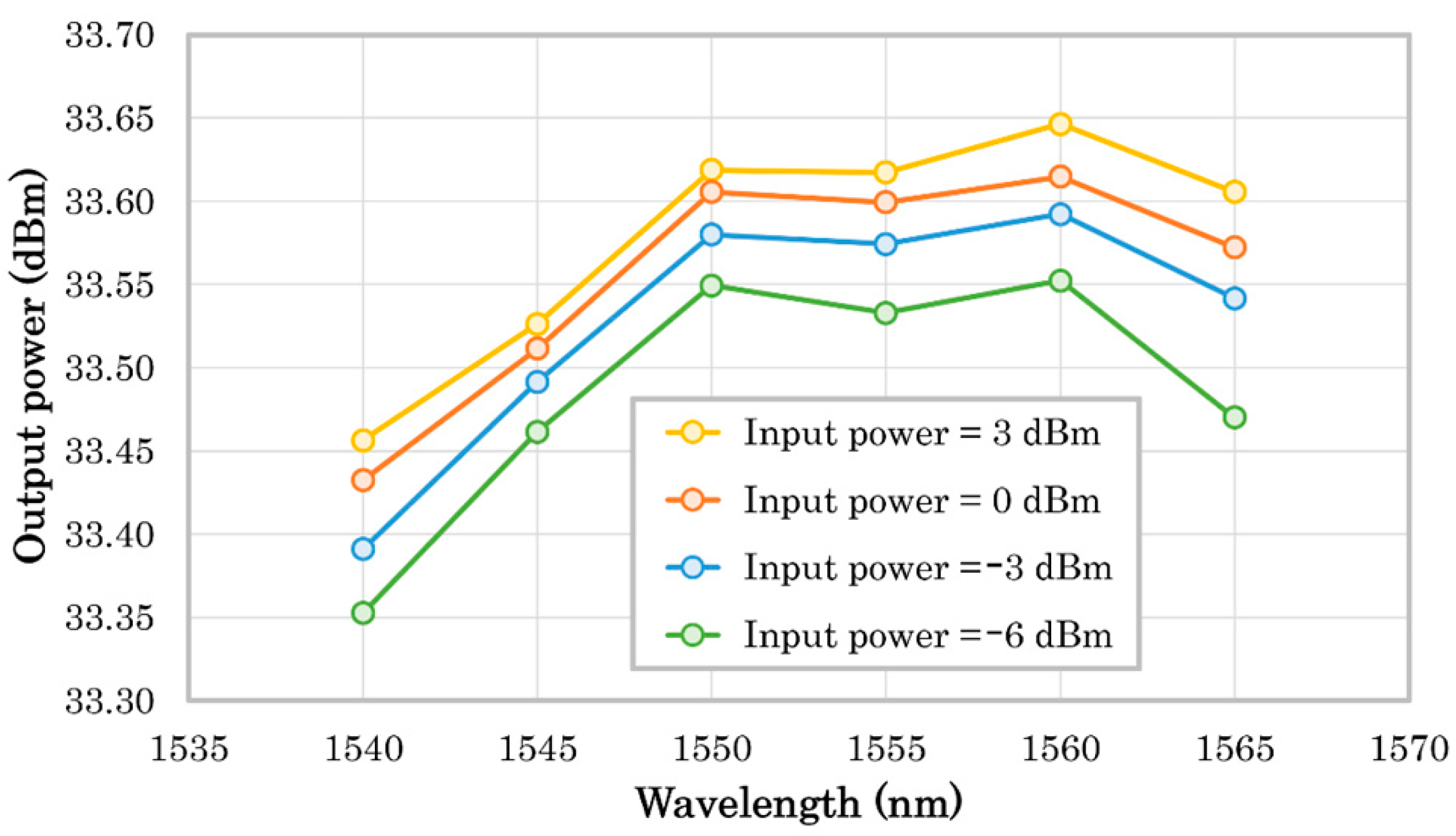
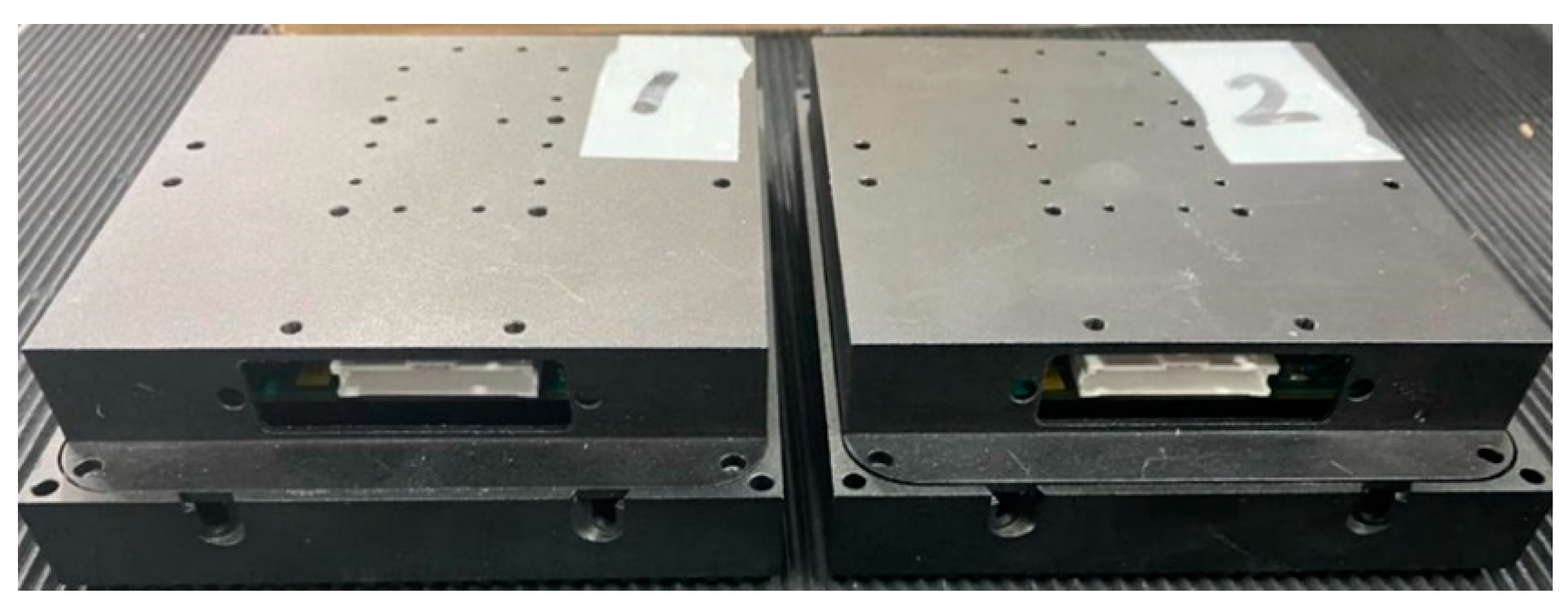

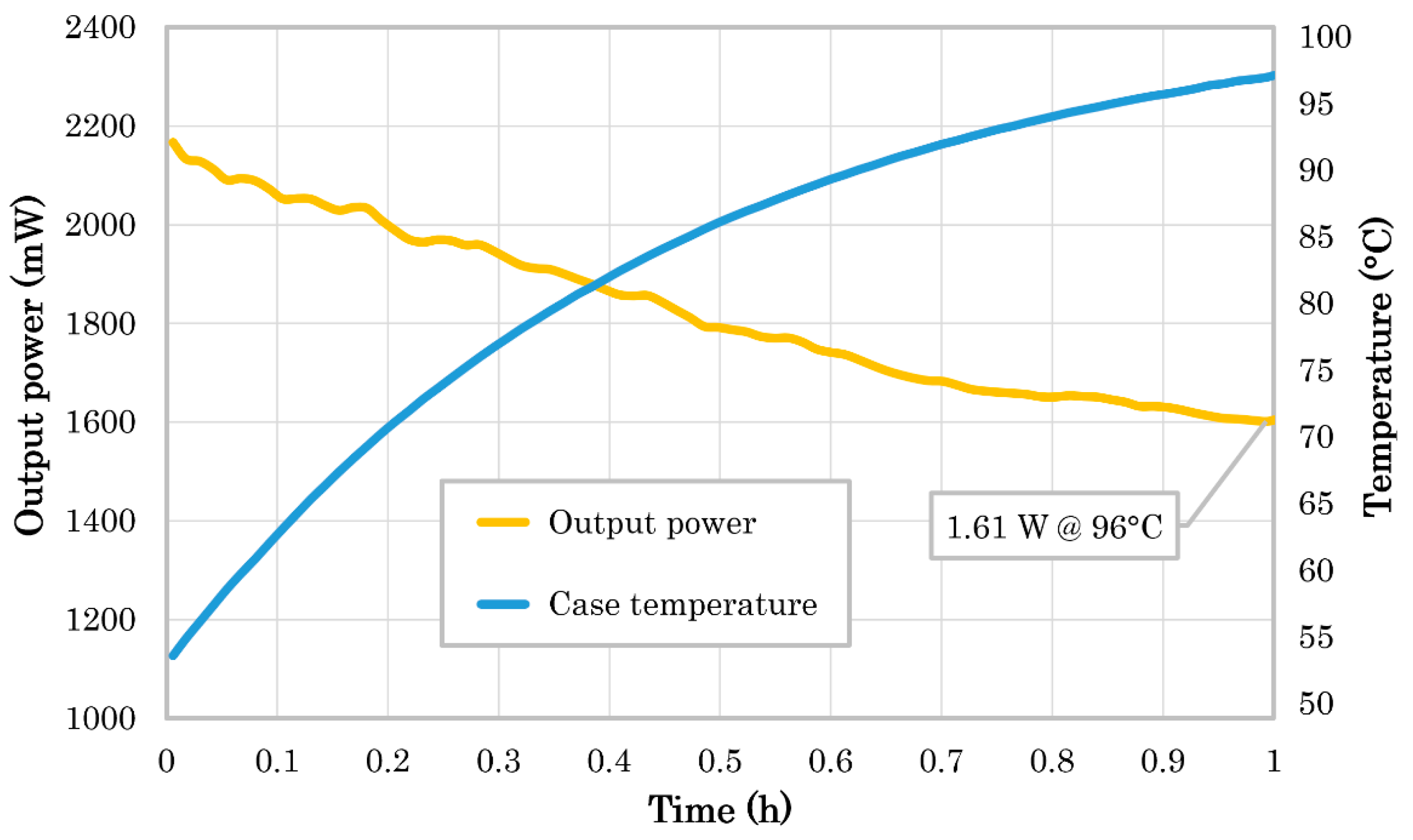

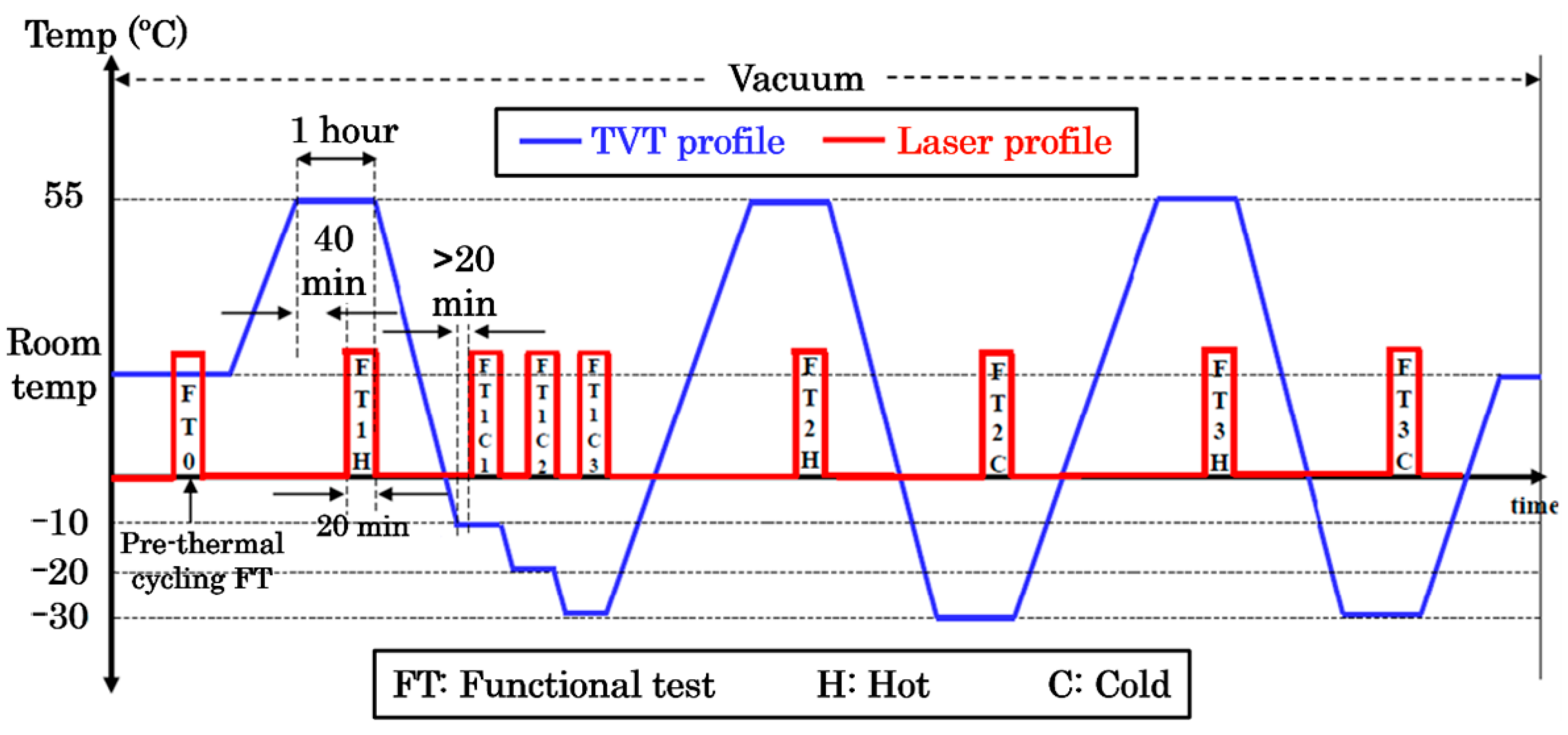
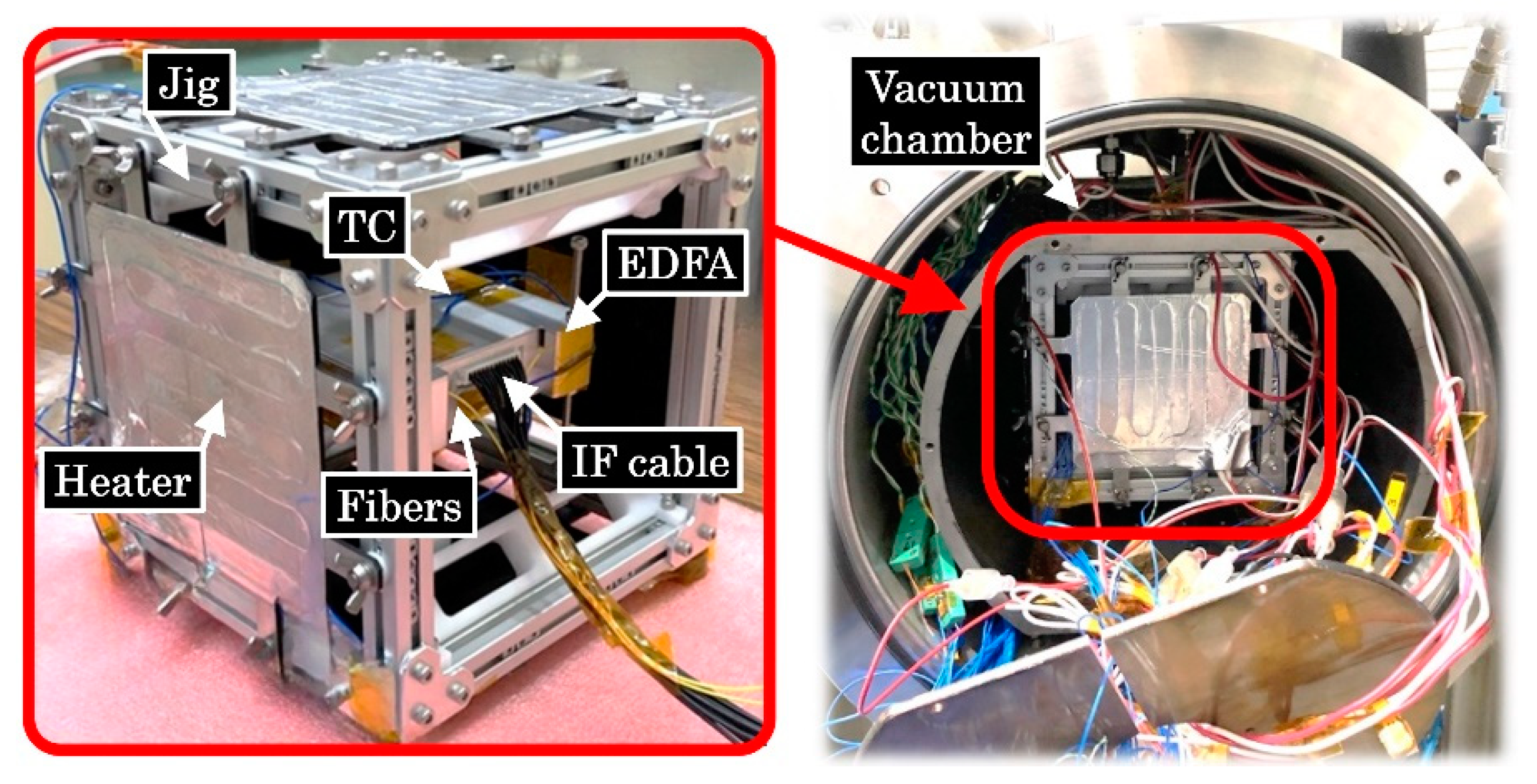
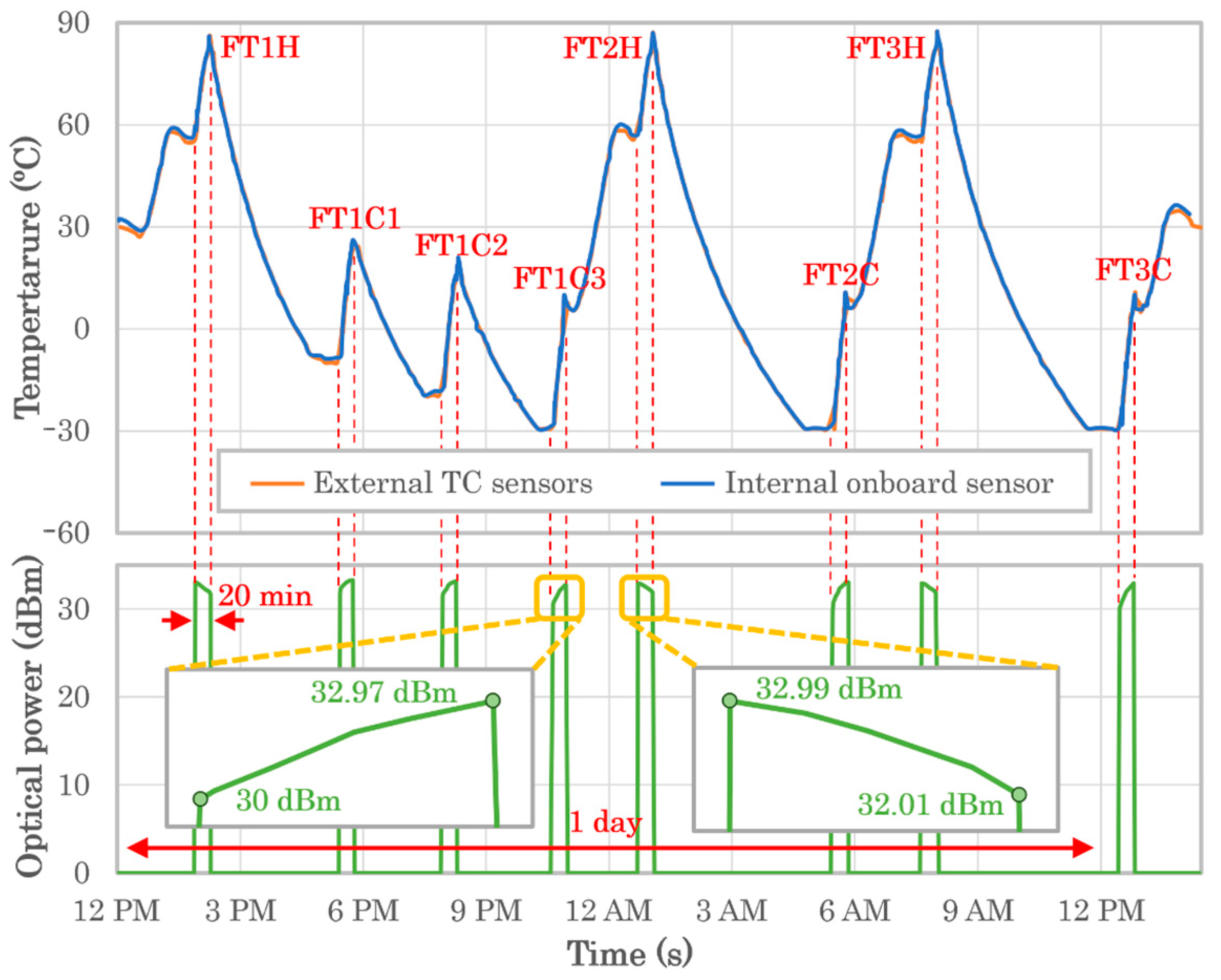
| Functional Test Name | Initial-Final Power (dBm) | Consumed Power (W) | Initial-Final Temp. (°C) |
|---|---|---|---|
| FT0 | 32.82 | 18.58 | Ambient |
| FT1H | 32.03 to 30.99 | 18.67 | 56.5 to 86.9 |
| FT1C1 | 31.6 to 33.2 | 17.92 | −10 to 25 |
| FT1C2 | 31 to 33.12 | 18.52 | −20 to 15 |
| FT1C3 | 30 to 32.97 | 17.99 | −30 to 5 |
| FT2H | 32.99 to 32.01 | 18.71 | 57.6 to 87.6 |
| FT2C | 30 to 32.99 | 17.79 | −30 to 5 |
| FT3H | 31.90 to 30.82 | 18.66 | 56.8 to 88.1 |
| FT3C | 30 to 32.92 | 17.74 | −30 to 5 |
Publisher’s Note: MDPI stays neutral with regard to jurisdictional claims in published maps and institutional affiliations. |
© 2022 by the authors. Licensee MDPI, Basel, Switzerland. This article is an open access article distributed under the terms and conditions of the Creative Commons Attribution (CC BY) license (https://creativecommons.org/licenses/by/4.0/).
Share and Cite
Carrasco-Casado, A.; Shiratama, K.; Kolev, D.; Trinh, P.V.; Ishola, F.; Fuse, T.; Toyoshima, M. Development and Space-Qualification of a Miniaturized CubeSat’s 2-W EDFA for Space Laser Communications. Electronics 2022, 11, 2468. https://doi.org/10.3390/electronics11152468
Carrasco-Casado A, Shiratama K, Kolev D, Trinh PV, Ishola F, Fuse T, Toyoshima M. Development and Space-Qualification of a Miniaturized CubeSat’s 2-W EDFA for Space Laser Communications. Electronics. 2022; 11(15):2468. https://doi.org/10.3390/electronics11152468
Chicago/Turabian StyleCarrasco-Casado, Alberto, Koichi Shiratama, Dimitar Kolev, Phuc V. Trinh, Femi Ishola, Tetsuharu Fuse, and Morio Toyoshima. 2022. "Development and Space-Qualification of a Miniaturized CubeSat’s 2-W EDFA for Space Laser Communications" Electronics 11, no. 15: 2468. https://doi.org/10.3390/electronics11152468








